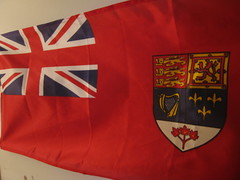| English: Diagram of venture capital fund structure for Venture capital (Photo credit: Wikipedia) |
The new start-up visa will link innovative entrepreneurs with private sector organizations in Canada that have experience working with start-ups and can provide entrepreneurs with essential resources. As a way to help these in-demand entrepreneurs fulfil their potential and maximize their impact on the Canadian labour market, they will require the support of a Canadian angel investor group or venture capital fund before they can apply for a start-up visa.
Citizenship and Immigration Canada (CIC) worked with industry umbrella groups, namely Canada’s Venture Capital and Private Equity Association (CVCA) and the National Angel Capital Organization (NACO), to identify eligible private sector organizations to partner in this program.
The umbrella organizations relied on specific criteria to determine which of their members are eligible to participate in the Start-Up Visa Program.
To receive designation to participate in the Start-Up Visa Program, a venture capital (VC) fund had to be a full member in good standing of the CVCA. VC funds that met this criterion and manage over $40 million in capital were automatically eligible to participate. VC funds that manage less than $40 million had to apply to the CVCA to participate in the Start-Up Visa Program. A number of factors were considered, including referrals from current CVCA members and interviews that the CVCA conducted with the limited partners of the fund.
Angel investor groups seeking to participate in the Start-Up Visa Program applied to NACO, of which they had to be a member in good standing. They were then assessed according to a number of criteria which included the level of deal flow in the past year, evidence of a thorough due diligence process, and evidence that all members of the group are accredited investors.
Immigrant entrepreneurs will require investment commitments from a venture capital fund or an angel investor group in order to apply for permanent resident status through the Start-Up Visa Program. An applicant must secure a minimum investment of $200,000 if the investment comes from a designated Canadian venture capital fund or a minimum investment of $75,000 if the investment comes from a designated Canadian angel investor group. Applicants will also need to meet general program requirements, such as language proficiency and academic experience.
The following is a list of the venture capital funds and angel investor groups that will participate in the Start-Up Visa Program:
Venture Capital Funds
- BDC Venture Capital
- Blackberry Partners Fund II LP (doing business as Relay Ventures Fund II)
- Celtic House Venture Partners
- Celtic House Venture Partners Fund III L.P.
- Celtic House Venture Partners Fund IV LP
- DRI Capital Inc.
- Golden Opportunities Fund Inc.
- iNovia Capital Inc.
- New Brunswick Innovation Foundation Inc.
- Northwater Intellectual Property Fund
- OMERS Ventures Management Inc.
- Pangaea Ventures Fund III, LP
- PRIVEQ Capital Funds
- PRIVEQ III Limited Partnership
- PRIVEQ IV Limited Partnership
- Quorum Group
- Advantage Growth (No.2) L.P.
- Ontario SME Capital Corporation
- Quorum Investment Pool Limited Partnership
- Quorum Secured Equity Trust
- Rho Canada Ventures
- Summerhill Venture Partners Management Inc.
- Tandem Expansion Management Inc.
- Vanedge Capital Limited Partnership
- Version One Ventures
- Wellington Financial LP
- Westcap Mgt. Ltd.
- Yaletown Venture Partners Inc.







